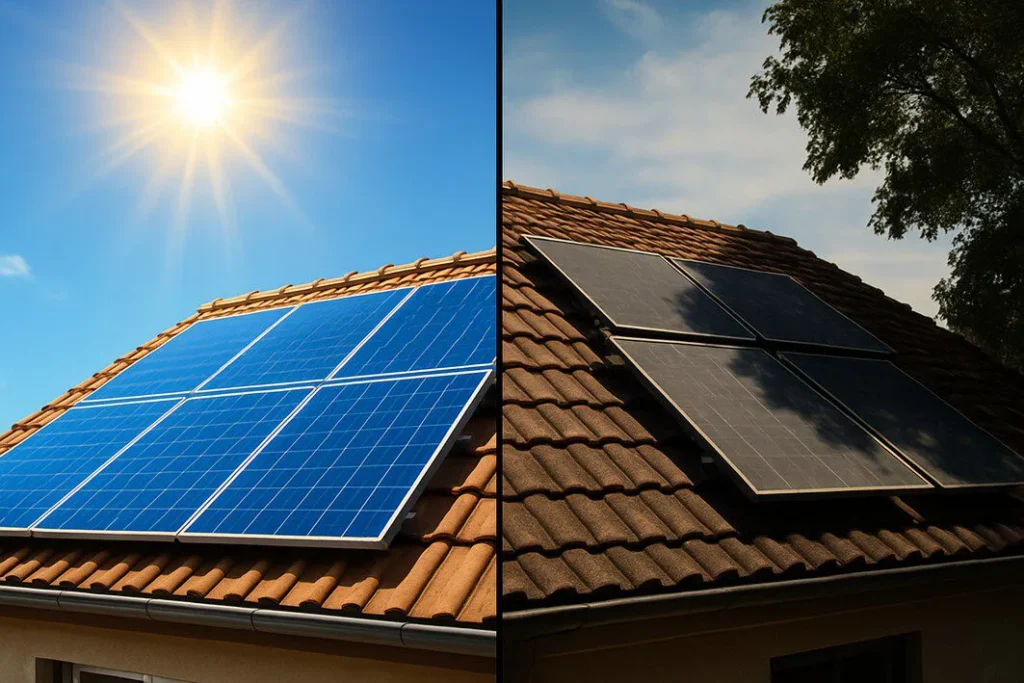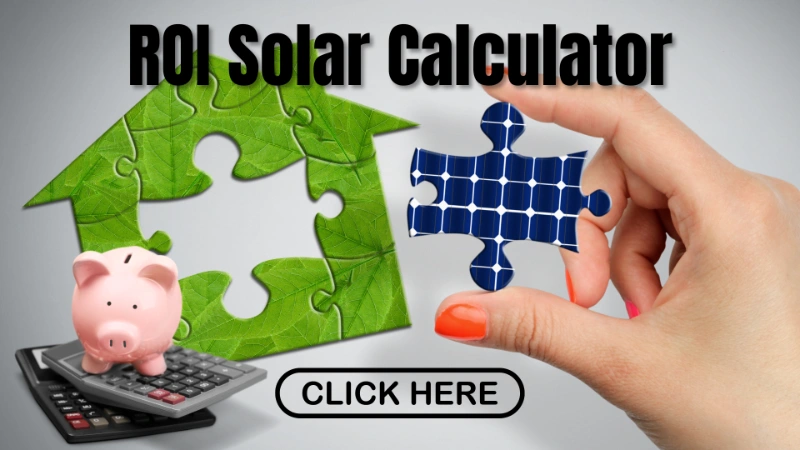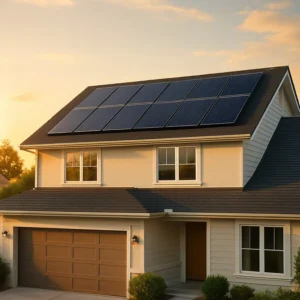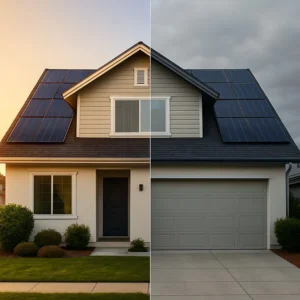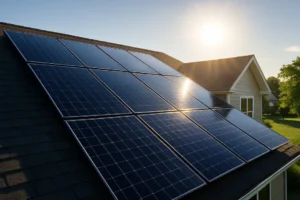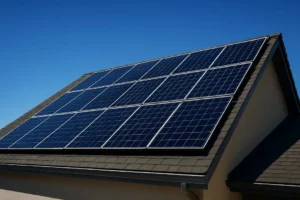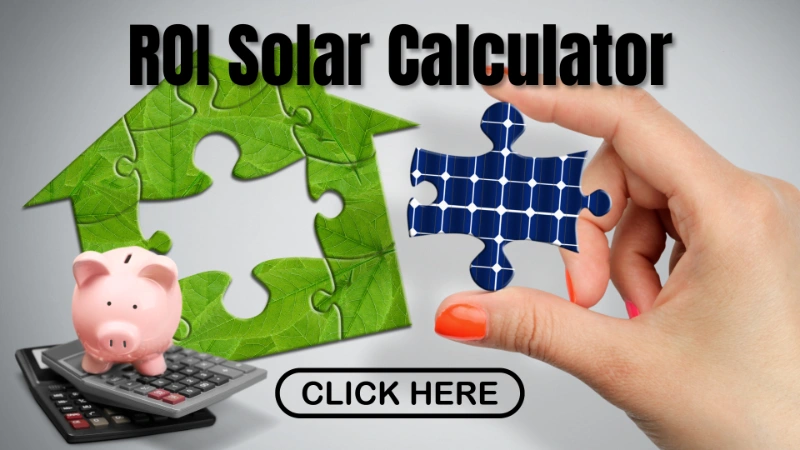Making the switch to solar energy is one of the smartest investments you can make for your home, your wallet, and the planet. It offers energy independence, predictable electricity costs, and a significantly reduced carbon footprint. But to truly unlock the maximum potential of your system, you need to look beyond the panels themselves and focus on a critical, often-overlooked factor: solar panel orientation efficiency. Getting the direction and angle of your panels right is not a minor tweak; it is the absolute key to generating the most power possible, accelerating your payback period, and maximizing your return on investment for decades to come.
Table of Contents
- What is Solar Panel Orientation and Why Does It Matter?
- Finding the Best Direction for Your Solar Panels
- The Optimal Angle (Tilt) for Maximum Efficiency
- How Location and Seasonality Impact Performance
- Putting It All Together: A Practical Checklist
- Tools and Resources for Optimizing Your System
- Conclusion: Maximize Your Solar Investment with Smart Orientation
This comprehensive guide is designed to walk you through everything you need to know. As experts in residential solar solutions, we at RenewGenius believe in empowering homeowners with a comprehensive solar knowledge base so you can make informed decisions with confidence. We’ll demystify the technical jargon and provide actionable insights. We’ll break down the concepts of direction and angle, explain how they directly impact your energy production, and provide practical steps to ensure your system is perfectly positioned for peak performance and financial return.
What is Solar Panel Orientation and Why Does It Matter?
Solar panel orientation refers to the two key positioning factors of your solar array, both of which are critical for capturing the maximum amount of solar radiation:
- Direction (Azimuth): This is the compass direction your panels face (e.g., south, east, west). Think of it as aiming your panels to align with the sun’s daily journey across the sky from sunrise to sunset.
- Angle (Tilt): This is the degree to which your panels are angled relative to the flat ground. This adjustment targets the sun’s height in the sky, which varies dramatically between the low-hanging sun of winter and the high-overhead sun of summer.
Why is this so important? Solar panels are like tiny power plants that generate electricity by capturing sunlight. Their output is directly proportional to the intensity of the light they absorb. When panels are perpendicular to the sun’s rays, they capture the maximum energy. Improper orientation can lead to significant energy loss—potentially reducing your system’s output by 25% or more over its lifetime. This means you won’t get the full benefit of your investment. Proper orientation ensures your panels catch the maximum number of sun rays throughout the day and across the seasons, directly impacting your energy savings, reducing your reliance on the grid, and shortening the time it takes for the system to pay for itself.
Finding the Best Direction for Your Solar Panels

So, what is the best orientation for solar panels? For the vast majority of homeowners in the Northern Hemisphere (including the United States and Europe), the optimal direction is true south. It’s important to distinguish this from magnetic south, as true south aligns with the Earth’s geographic pole and is the center point of the sun’s path.
Facing your panels south ensures they are pointed toward the sun’s arc across the sky for the longest portion of the day, especially during peak sunlight hours between 10 a.m. and 3 p.m. This maximizes total sun exposure and, therefore, maximizes total energy generation. This is the gold standard for solar panel direction efficiency and will yield the highest overall kilowatt-hour (kWh) production annually.
However, a perfect south-facing roof isn’t always an option, and it might not even be the best choice for every situation, especially when considering modern utility billing structures.
- East-Facing Panels: These panels capture strong morning sun, generating a surge of power early in the day. This can be highly beneficial if your household’s energy usage is highest in the morning—think running appliances, making breakfast, and for those who work from home—or if your utility company has time-of-use (TOU) rates that make morning energy more expensive.
- West-Facing Panels: These panels capture the intense afternoon and evening sun, producing maximum power later in the day. This is ideal for homes with high energy consumption in the late afternoon, such as running the air conditioning on a hot day after work or charging an electric vehicle overnight. This can be extremely valuable under TOU billing, as afternoon energy is often the most expensive.
- East-West Systems: Some homes with suitable roof structures install panels on both east and west-facing roof planes. While this split system won’t produce the same single peak power as a south-facing system, it provides a broader, more consistent generation curve throughout the day. This “shoulder production” reduces your grid reliance in the morning and evening, making it a highly effective strategy for maximizing self-consumption of your solar power.
The Optimal Angle (Tilt) for Maximum Efficiency
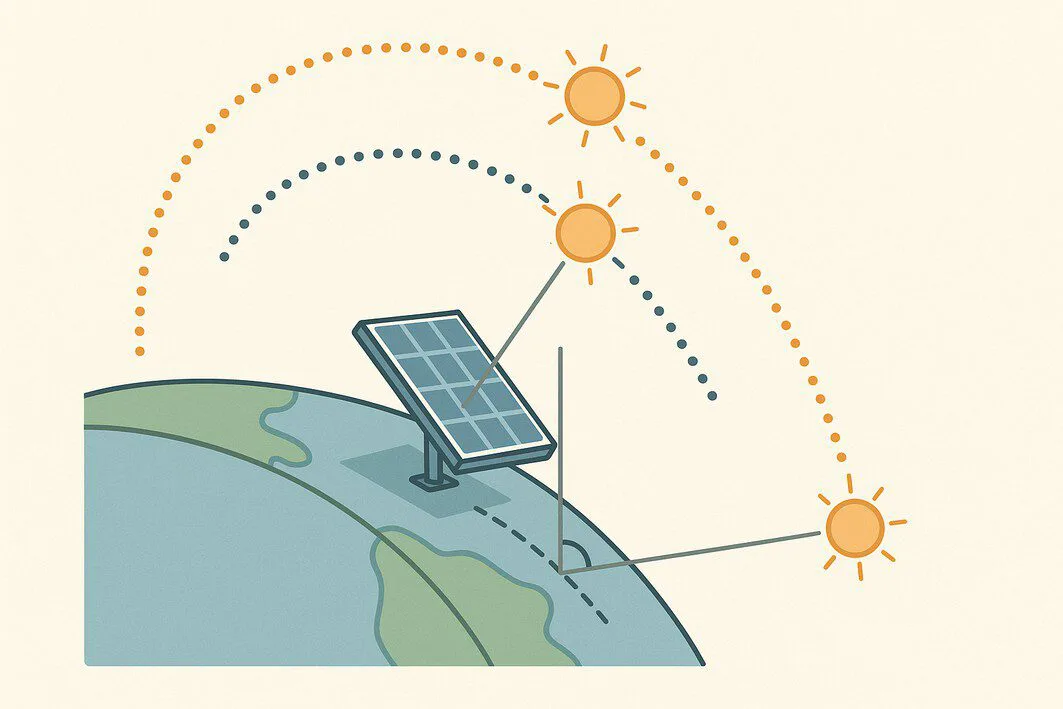
While direction targets the sun’s daily east-to-west path, the angle, or tilt, targets the sun’s height in the sky, which changes dramatically with the seasons. Achieving high solar panel angle efficiency is the second essential piece of the optimization puzzle. You want the sun’s rays to hit the panel surface as close to a 90-degree angle as possible.
As a general rule of thumb, the ideal fixed tilt angle for your solar panels is equal to your home’s latitude. This simple rule works because setting the tilt to your latitude ensures the panels are perfectly perpendicular to the sun’s rays during the spring and fall equinoxes, providing an excellent average for year-round performance. For example:
- If you live in Austin, Texas (latitude ~30°), the optimal tilt is around 30 degrees from the horizontal.
- If you live in Seattle, Washington (latitude ~47°), the best tilt is closer to 47 degrees to better catch the lower-angled sun.
This angle provides the best year-round average production. For homeowners or off-grid enthusiasts seeking absolute peak efficiency, the angle could be adjusted seasonally—a steeper angle in the winter (latitude + 15°) to catch the low-hanging sun and a flatter angle in the summer (latitude – 15°) when the sun is high overhead. However, for most residential installations, this requires expensive and complex adjustable mounting systems. Therefore, a single, fixed angle optimized for your latitude offers the best balance of performance, cost, and long-term practicality.
How Location and Seasonality Impact Performance
Northern vs. Southern Hemisphere
It’s crucial to remember that all this advice is for the Northern Hemisphere. The underlying principle is universal: point your panels toward the equator. If you live in the Southern Hemisphere (e.g., Australia, South America), the principle is the same, but the direction is reversed: you should face your panels true north to maximize their exposure to the sun’s path.
Seasonal Sun Path Changes
The sun is not in a fixed position. In the winter, it hangs lower in the sky, and daylight hours are shorter. In the summer, it passes almost directly overhead for a longer period. This is why a steeper tilt is technically better in winter and a shallower one in summer. Your installer will calculate the best fixed tilt to balance these seasonal variations. This means your system is intentionally designed to be slightly sub-optimal in the dead of winter and peak of summer to achieve the highest possible *annual* energy production.
Local Factors to Consider
Even with a perfect roof orientation, local obstructions can sabotage your efficiency. Before installation, you or your solar consultant must conduct a thorough shading analysis to assess potential issues from:
- Trees: It’s not enough to assess their current size. You must consider their potential growth over the 25-30 year lifespan of your solar panel system. A small sapling today could cast a large shadow in 15 years.
- Neighboring buildings or homes: Consider both existing structures and the potential for future construction on adjacent properties that could cast new shadows on your roof.
- Chimneys or vents on your own roof: These “hard shadow” sources are unavoidable but must be planned around. A professional installer will position panels to minimize their impact throughout the day.
Why this matters: Even partial shading on a single panel can significantly reduce the output of the entire string of panels. Most residential systems connect panels in a series, much like old-fashioned Christmas lights. If one panel’s production drops due to a shadow, it acts as a bottleneck, dragging down the performance of every other panel in that string.
Putting It All Together: A Practical Checklist
Feeling overwhelmed? Don’t be. Here’s a simple checklist to help you think through your home’s unique situation and prepare for a conversation with a solar professional:
- Confirm Your Direction: Use a compass app on your phone (many have a “true north” setting) to determine which way your primary roof planes face. A south-facing roof is your prime candidate for maximum annual production.
- Assess Your Roof’s Pitch: Most common roof pitches (between 30-45 degrees) naturally fall within an acceptable range for solar panel tilt in much of the U.S. A professional can confirm if your specific pitch is optimal or if tilted mounting brackets would be beneficial.
- Identify Shading Issues: Be an observer. Look at your roof at different times of the day—for example, 9 AM, 12 PM, and 4 PM—to see if and when shadows from trees or other buildings fall across it. Note how these shadows shift with the seasons.
- Check Your Utility Bill: Look for your billing structure. Do you have time-of-use (TOU) rates where electricity costs more in the afternoon? If so, an east or west-facing system might offer better financial returns by offsetting the most expensive power, even if it generates fewer total kilowatt-hours than a south-facing one.
- Consult with Experts: The best way to ensure maximum solar panel orientation efficiency is to work with a professional. They use specialized software to create a 3D model of your home and run a “sun path analysis” to forecast production and identify the exact optimal placement, guaranteeing you get the most from your system.
Tools and Resources for Optimizing Your System
Navigating these variables is much easier with the right tools. Solar professionals use sophisticated software, like Aurora Solar and Helioscope, to move beyond guesswork. This technology creates a detailed 3D model of your home and its surroundings, then simulates the sun’s path for every hour of the year to accurately model shading, sun paths, and potential energy production, allowing them to pinpoint the perfect orientation.
For homeowners, one of the most powerful first steps is to see how these factors impact your bottom line. Using an ROI calculator can help you visualize how different setups and orientations affect your potential energy savings and payback period. By inputting your details, you can begin to understand the tangible financial benefits of a well-designed system versus a poorly planned one. Furthermore, understanding the core components of a residential solar system provides the foundational knowledge needed to appreciate how each part, from panels to inverters, contributes to overall efficiency.
At RenewGenius, our entire mission is to provide this level of insight. Our comprehensive solar knowledge base and unwavering focus on residential solar solutions are designed to demystify the process and help you move forward with clarity and confidence in your investment.
Conclusion: Maximize Your Solar Investment with Smart Orientation
Achieving optimal solar panel orientation efficiency is not an accident; it’s the result of careful, informed planning. By understanding the critical roles of both direction (azimuth) for the sun’s daily path and angle (tilt) for its seasonal height, you can ensure your solar energy system is positioned to capture the most sunlight possible. This technical precision translates directly into tangible, real-world benefits: lower electricity bills, a smaller carbon footprint, greater energy independence, and a faster return on your investment.
Don’t leave your energy savings to chance or settle for a “one-size-fits-all” installation. Use this guide as your starting point to become an educated solar consumer. When you’re ready, consult with a trusted professional to analyze your unique property and design a system that is perfectly tailored to your home, your energy usage patterns, and your financial goals.

